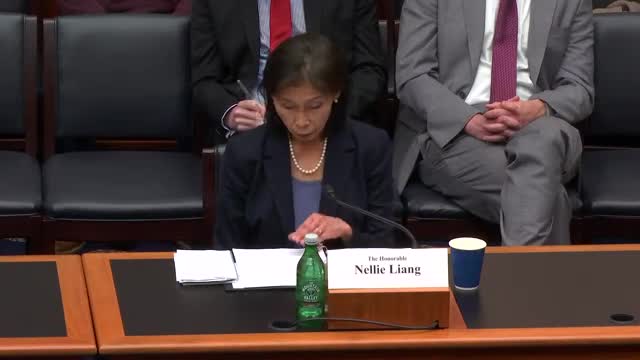Congress reviews Treasury market reforms to enhance resilience amid rising debt
April 09, 2025 | Financial Services: House Committee, Standing Committees - House & Senate, Congressional Hearings Compilation
This article was created by AI summarizing key points discussed. AI makes mistakes, so for full details and context, please refer to the video of the full meeting. Please report any errors so we can fix them. Report an error »

The U.S. House Committee on Financial Services convened on April 9, 2025, to discuss the growing complexities and challenges surrounding U.S. Treasury debt in the monetary system. Key discussions highlighted the increasing role of electronic trading and the shift in market dynamics following the global financial crisis.
During the meeting, it was noted that electronic trading has surged, with principal trading firms dominating the electronic interdealer markets. Traditional securities dealers have reduced their market-making activities due to heightened capital standards and risk management practices. This shift has led to a more price-sensitive investor base, particularly as private funds have increased their holdings amid redemption pressures. Conversely, the share of Treasury securities held by foreign official entities, typically less price-sensitive, has declined.
The committee also revisited the dysfunction in the Treasury market experienced during the onset of the COVID-19 pandemic in March 2020. This event underscored the risks associated with liquidity, as Treasury prices fell and interest rates rose sharply—an atypical reaction during a crisis when investors usually seek safe-haven assets. The Federal Reserve intervened by purchasing substantial amounts of Treasury securities to restore market functioning and support monetary policy objectives aimed at stimulating the economy.
To enhance the resilience of the Treasury market, several regulatory reforms were proposed. These include increased transparency through better data collection on transactions and hedge funds, as well as the initiation of a Treasury buyback program to assist dealers in managing their balance sheets. The Federal Reserve has also established standing facilities to finance Treasury repos, encouraging dealers to bolster their market-making capacity during stressful periods.
The committee emphasized the importance of the Securities and Exchange Commission's (SEC) role in mandating more central clearing of Treasury and repo transactions. Central clearing can mitigate risks by standardizing requirements and improving intermediation capacity. However, the meeting acknowledged the operational and regulatory challenges that remain.
Further discussions included potential changes to the supplementary leverage ratio (SLR) that could alleviate capital requirements for banks holding central bank reserves, and measures to address liquidity mismatches in open-end bond funds that could lead to forced Treasury sales during market stress.
Overall, the committee underscored that these reforms are interconnected and essential for enhancing the resilience of Treasury markets, especially as the national debt continues to rise. The meeting concluded with a commitment to further discussions and questions from committee members.
During the meeting, it was noted that electronic trading has surged, with principal trading firms dominating the electronic interdealer markets. Traditional securities dealers have reduced their market-making activities due to heightened capital standards and risk management practices. This shift has led to a more price-sensitive investor base, particularly as private funds have increased their holdings amid redemption pressures. Conversely, the share of Treasury securities held by foreign official entities, typically less price-sensitive, has declined.
The committee also revisited the dysfunction in the Treasury market experienced during the onset of the COVID-19 pandemic in March 2020. This event underscored the risks associated with liquidity, as Treasury prices fell and interest rates rose sharply—an atypical reaction during a crisis when investors usually seek safe-haven assets. The Federal Reserve intervened by purchasing substantial amounts of Treasury securities to restore market functioning and support monetary policy objectives aimed at stimulating the economy.
To enhance the resilience of the Treasury market, several regulatory reforms were proposed. These include increased transparency through better data collection on transactions and hedge funds, as well as the initiation of a Treasury buyback program to assist dealers in managing their balance sheets. The Federal Reserve has also established standing facilities to finance Treasury repos, encouraging dealers to bolster their market-making capacity during stressful periods.
The committee emphasized the importance of the Securities and Exchange Commission's (SEC) role in mandating more central clearing of Treasury and repo transactions. Central clearing can mitigate risks by standardizing requirements and improving intermediation capacity. However, the meeting acknowledged the operational and regulatory challenges that remain.
Further discussions included potential changes to the supplementary leverage ratio (SLR) that could alleviate capital requirements for banks holding central bank reserves, and measures to address liquidity mismatches in open-end bond funds that could lead to forced Treasury sales during market stress.
Overall, the committee underscored that these reforms are interconnected and essential for enhancing the resilience of Treasury markets, especially as the national debt continues to rise. The meeting concluded with a commitment to further discussions and questions from committee members.
View full meeting
This article is based on a recent meeting—watch the full video and explore the complete transcript for deeper insights into the discussion.
View full meeting